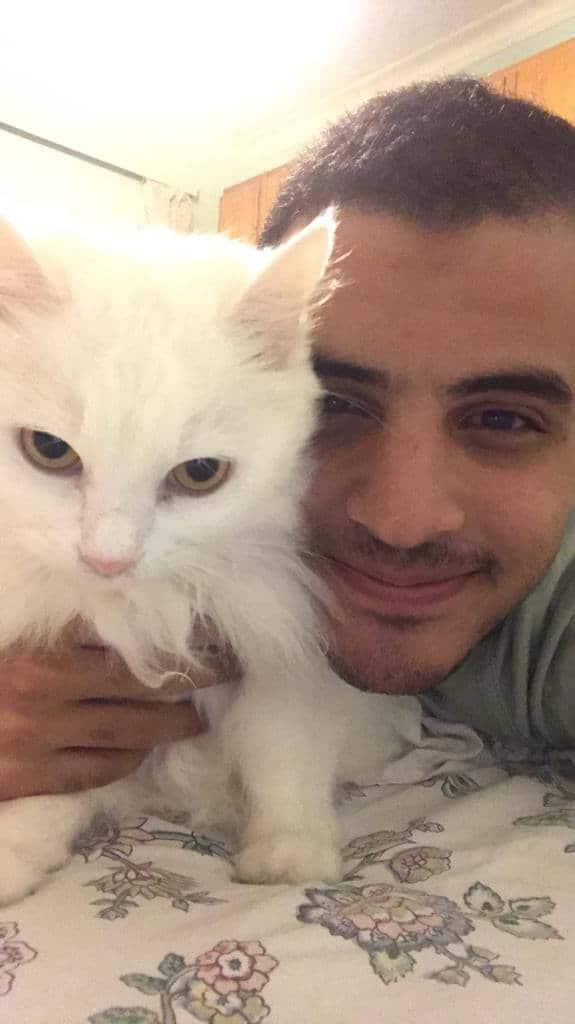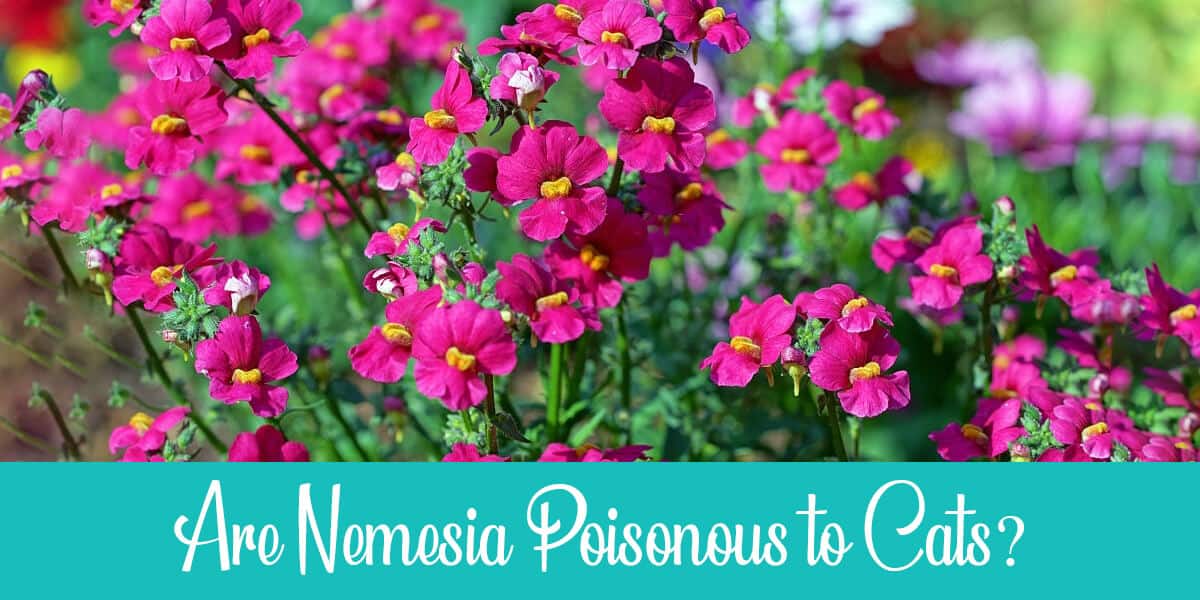Nemesia is some of the prettiest flowers to keep inside your house, but their bright colors can draw the attention of your little kitten. Even without their vibrant hues, their fragrance might be enough to make your cat curious to the point of taking a bite.
But are nemesia poisonous to cats? Should you take extra care where you put them or is it okay if your cat ingests some by accident?
Let’s find out!
Table of Contents
Are Nemesia Poisonous to Cats?
Nemesia flowers aren’t toxic to cats, and tasting them shouldn’t harm your furry friend.
However, you should also keep in mind that consuming a large amount of plant material, even if non-toxic, can upset a cat’s stomach. This is because the digestive system of felines isn’t modeled to handle eating big portions of plants or vegetables.
What Can Ingesting Too Many Nemesia Flowers Do to a Cat?
Because cats are carnivores, having substantial quantities of plants, including nemesia, may not sit well with their stomachs. This could lead to a multitude of unwanted symptoms, including:
- Vomiting
- Diarrhea
- Increased salivation
Remember that plants or vegetables should only make up 10-15% of a cat’s daily diet. If she eats more than this percentage, she’ll be taking more minerals and vitamins than her body needs.
At the same time, she’ll end up eating less protein from meat because her belly will be full of all the plant material she’d consumed. Of course, that’s not ideal since protein should be at least 25% of the diet of a fully-grown cat.
Related Posts:
– What Types of Marigolds Are Poisonous to Cats?
– Are Lisianthus Toxic to Cats?
– Kimberly Queen Ferns Toxicity for Cats
– Are Bromeliads Dangerous to my Cat?
– Bougainvillea Toxicity on Cats
Which Plants and Flowers Shouldn’t Be Around Cats?
Thankfully, nemesia flowers aren’t present on the ASPCA list of poisonous plants. However, we can’t say that for other types of home plants that might be outright fatal. To make sure you’re on the right track, take a look at the following list of plants that aren’t safe to keep near cats.
- Most types of lilies
- Azalea
- Aloe vera
- Daffodil
- Daisy
- Oleander
- Tulip
- English ivy
- Chrysanthemum
These plants vary in their degree of toxicity. Some can cause mild symptoms while others might cause harm even if they’re only licked. For example, eating daffodils, especially in large amounts, could lead to vomiting, excessive drooling, convulsions, and low blood pressure.
On the other hand, only sniffing or having a taste of the water of various lilies could cause kidney failure.
Are Cats Likely to Eat Poisonous Plants?
It’s rare for cats to carelessly munch on a toxic plant.
See, despite the curiosity that cats are known for, most of them get wary when some new kind of food is introduced to them. They’re generally careful about what they put in their mouths, so it’s not often that they’ll end up with plant poisoning.
Usually, it’s an inexperienced kitten that’s prone to eating harmful plants. So, if you have a young feline at home where you keep a bouquet of lilies or other toxic flowers, you must ensure they’re out of her or his reach.
How to Tell If a Cat Ate a Toxic Plant
The symptoms of plant poisoning will probably show within mere minutes of ingesting the poisonous part of the plant, starting with:
- Lethargy
- Vomiting
- Breathing difficulty
- Excessive drooling
- Twitching and discomfort
- Swelling of the skin
If these signs go unnoticed, the cat’s condition might become worse. Therefore, the cat’s owner must contact the vet at once to know how to deal with the poisoning.
What Are Some Other Plants and Flowers That Aren’t Toxic to Cats?
Fortunately, you can pair your nemesia with other beautiful flowers indoors without worrying about them having negative effects on your feline friend. These plants include:
- Echeveria succulents
- Spider plant
- Sunflower
- Cilantro
- Roses
- Basil
Just like nemesia, those plants and flowers won’t cause harm if your cat licks them or munches on a petal or two. Of course, that doesn’t mean to let her eat at them all day long so that she doesn’t trouble her digestive system.
Why Are Cats Drawn to Plants?
Cats like to chew on plants or flowers occasionally for many reasons, such as:
- Boredom
- Curiosity about the plant’s smell, texture, or taste
- The attractive way that some plant leaves move with the breeze
What Are Some of the Best Cat-Friendly Plants to Offer My Cat?
While they’re not many, a few plants are excellent candidates to have your cat nibble at them without concerning yourself with consequences. These cat-friendly plants include the famous catnip and cat grass.
Recommended: are gerberas toxic to cats?
Catnip
The coolest thing about catnip is that it tastes great to a cat, not to mention that it’s easy to grow. In other words, you’ll always have a fresh supply of catnip to let your cat enjoy the distinctive texture of the plant against her teeth.
Cat Grass
Did you know that some cats love to eat grass? Yet, the problem with ordinary grass is that it can be quick to upset a cat’s stomach, and she’ll usually throw it back up after a short while.
Well, if your cat likes to have a go at freshly-cut grass, you can introduce her to cat grass instead. See, cat grass mainly consists of wheat, barley, and ryegrasses, and it’s also pretty simple to grow indoors.
The Bottom Line
“Are nemesia poisonous to cats?” is a fair question to ask if you like to keep all sorts of attractive flowers on your windowsill where your little kitten can brush past.
Thankfully, nemesia flowers aren’t toxic. Therefore, an innocent lick or nip won’t cause your cat any trouble. Just make sure that your fluffy friend doesn’t consume generous amounts of nemesia so as not to end up with a not-very-happy stomach.

I’ve been living with cats since 2008 and I can confidently say I have more feline friends than humans lol. I currently live with 5 cats in different life stages; two of them are less than one year old, one is 2-ish years old and the oldest two are 9-ish years old. I’ve developed a strong bond with cats over the years and I’m eager to share my experience through this blog. You can learn more about my cats here.

